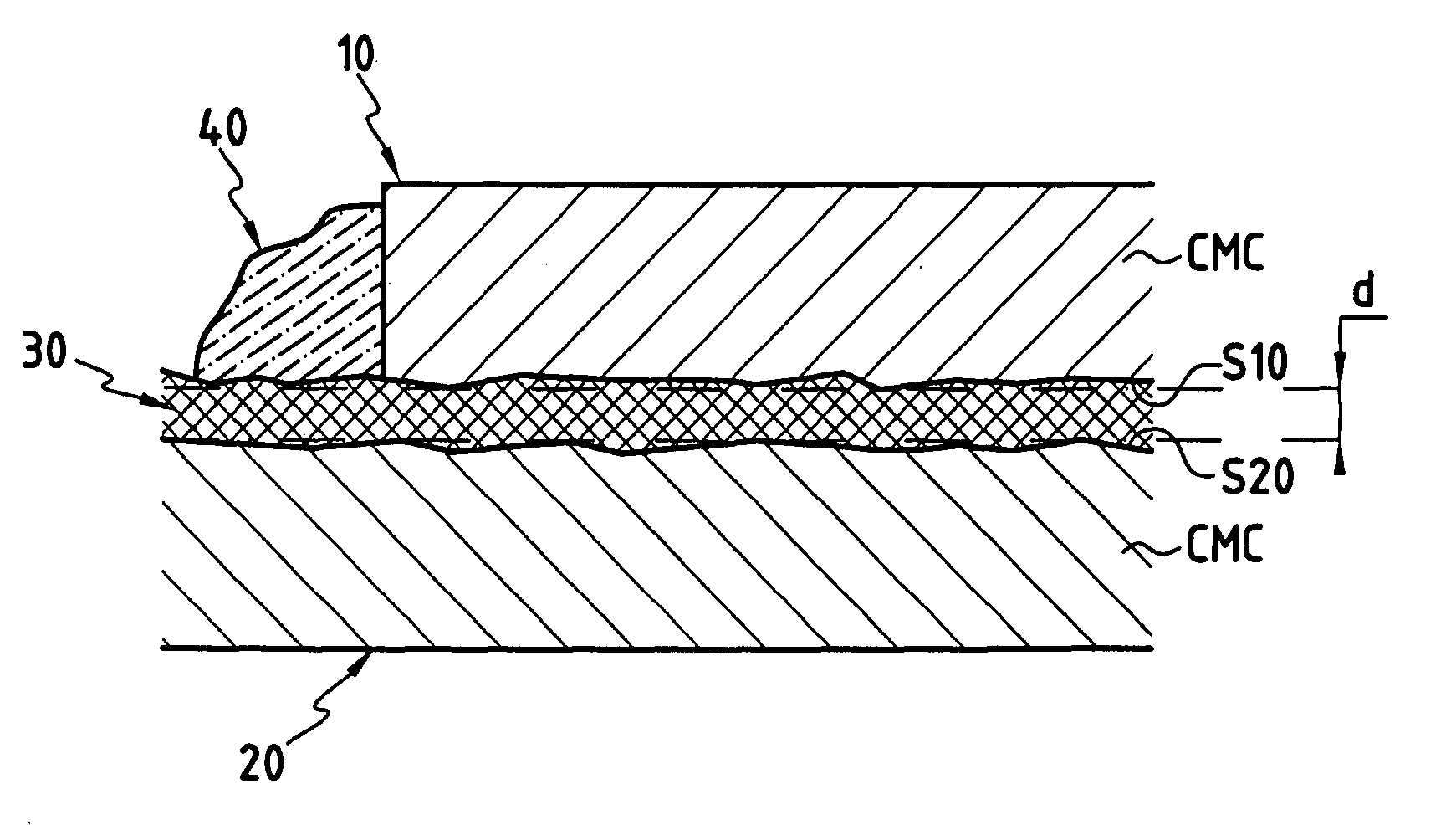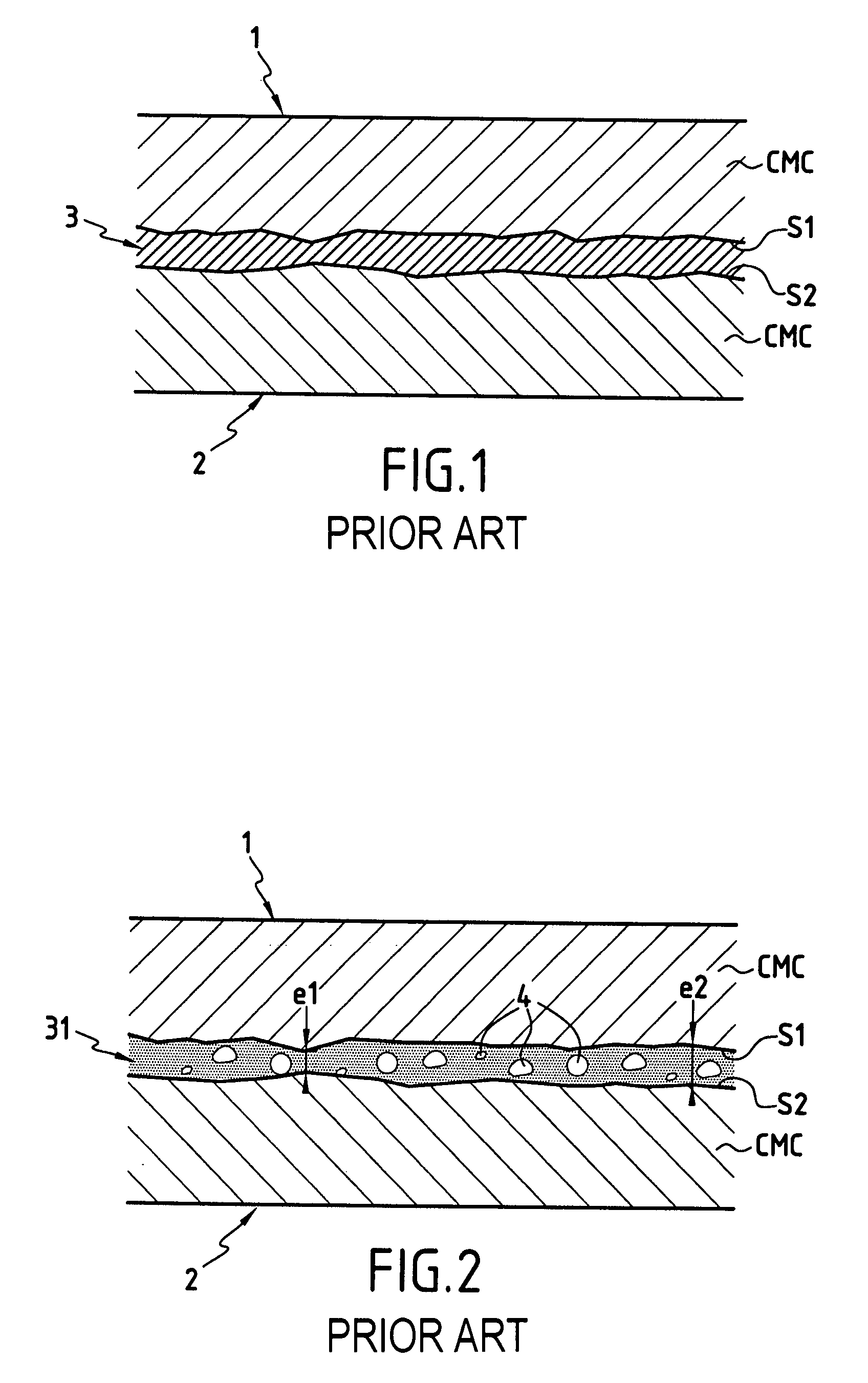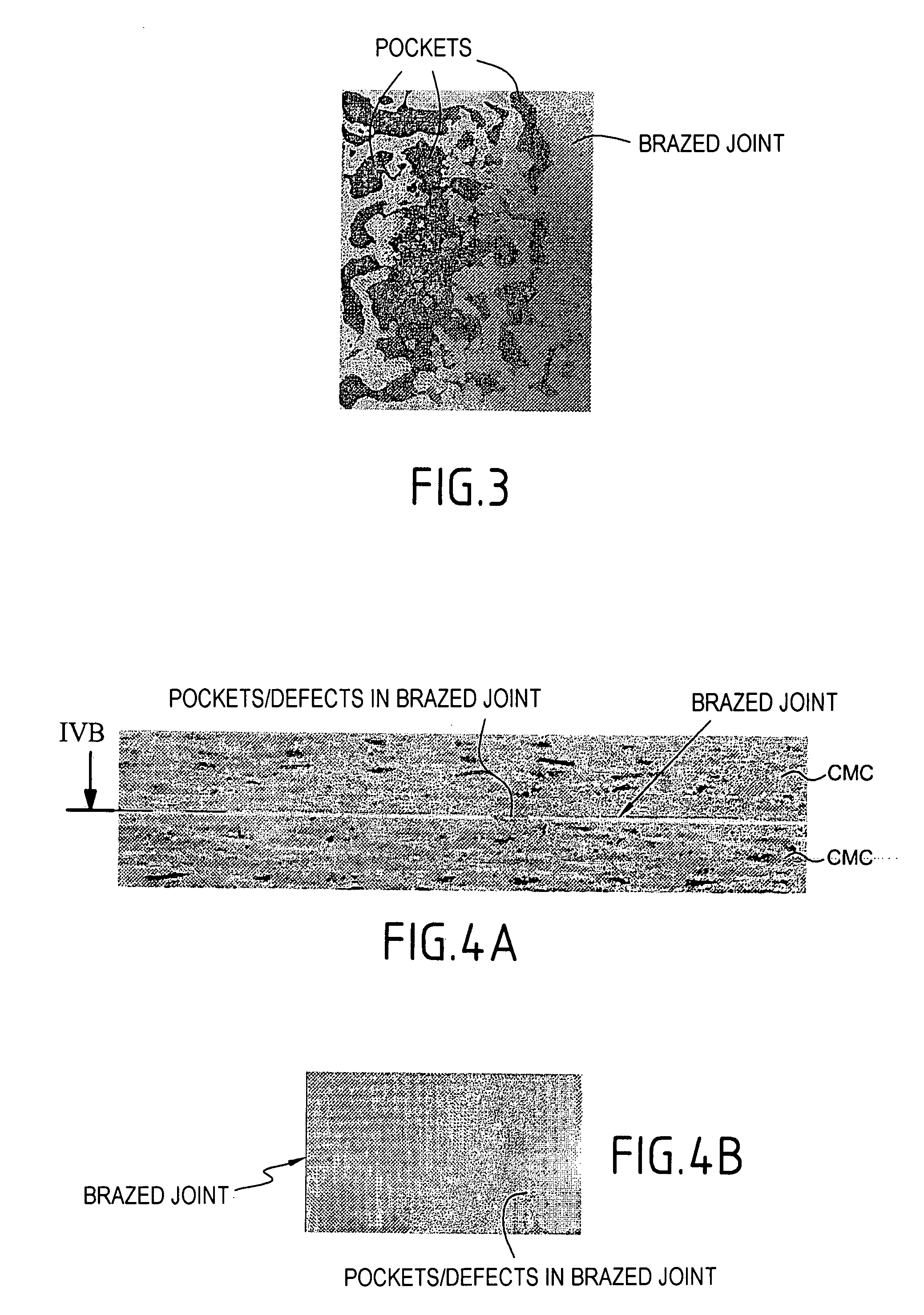Method For Soldering Composite Material Parts
a composite material and composite material technology, applied in the direction of soldering apparatus, paper/cardboard containers, manufacturing tools, etc., can solve the problems of degrading the quality of the assembly, difficult to braze ceramic matrix composite materials, and uneven brazing composition, etc., to achieve the effect of convenient handling
- Summary
- Abstract
- Description
- Claims
- Application Information
AI Technical Summary
Benefits of technology
Problems solved by technology
Method used
Image
Examples
Embodiment Construction
[0024]The method of the present invention for assembling parts together by brazing applies to parts made of any thermostructural ceramic matrix composite (CMC) material, i.e. any material constituted by reinforcement of refractory fibers (carbon fibers or ceramic fibers) densified by a ceramic matrix that is also refractory, such as C / SiC, SiC / SiC, C / C—SiC materials, etc. The method also applies to other types of material that are liable to give off gaseous species during brazing, such as C / C materials or monolithic ceramics.
[0025]With reference to FIGS. 5 and 6, an implementation of a method in accordance with the invention for assembling together two parts 10 and 20 of CMC material by brazing comprises the following steps.
[0026]As shown in FIG. 6, the first step (step S1) consists in placing between the surface S10 of a first part 10 of CMC material and the surface S20 of a second part 20 likewise of CMC material, a “dry” (i.e. non-impregnated) pad 30 made of a texture of carbon f...
PUM
| Property | Measurement | Unit |
|---|---|---|
| temperatures | aaaaa | aaaaa |
| thickness | aaaaa | aaaaa |
| dimensions | aaaaa | aaaaa |
Abstract
Description
Claims
Application Information
 Login to View More
Login to View More - R&D
- Intellectual Property
- Life Sciences
- Materials
- Tech Scout
- Unparalleled Data Quality
- Higher Quality Content
- 60% Fewer Hallucinations
Browse by: Latest US Patents, China's latest patents, Technical Efficacy Thesaurus, Application Domain, Technology Topic, Popular Technical Reports.
© 2025 PatSnap. All rights reserved.Legal|Privacy policy|Modern Slavery Act Transparency Statement|Sitemap|About US| Contact US: help@patsnap.com



